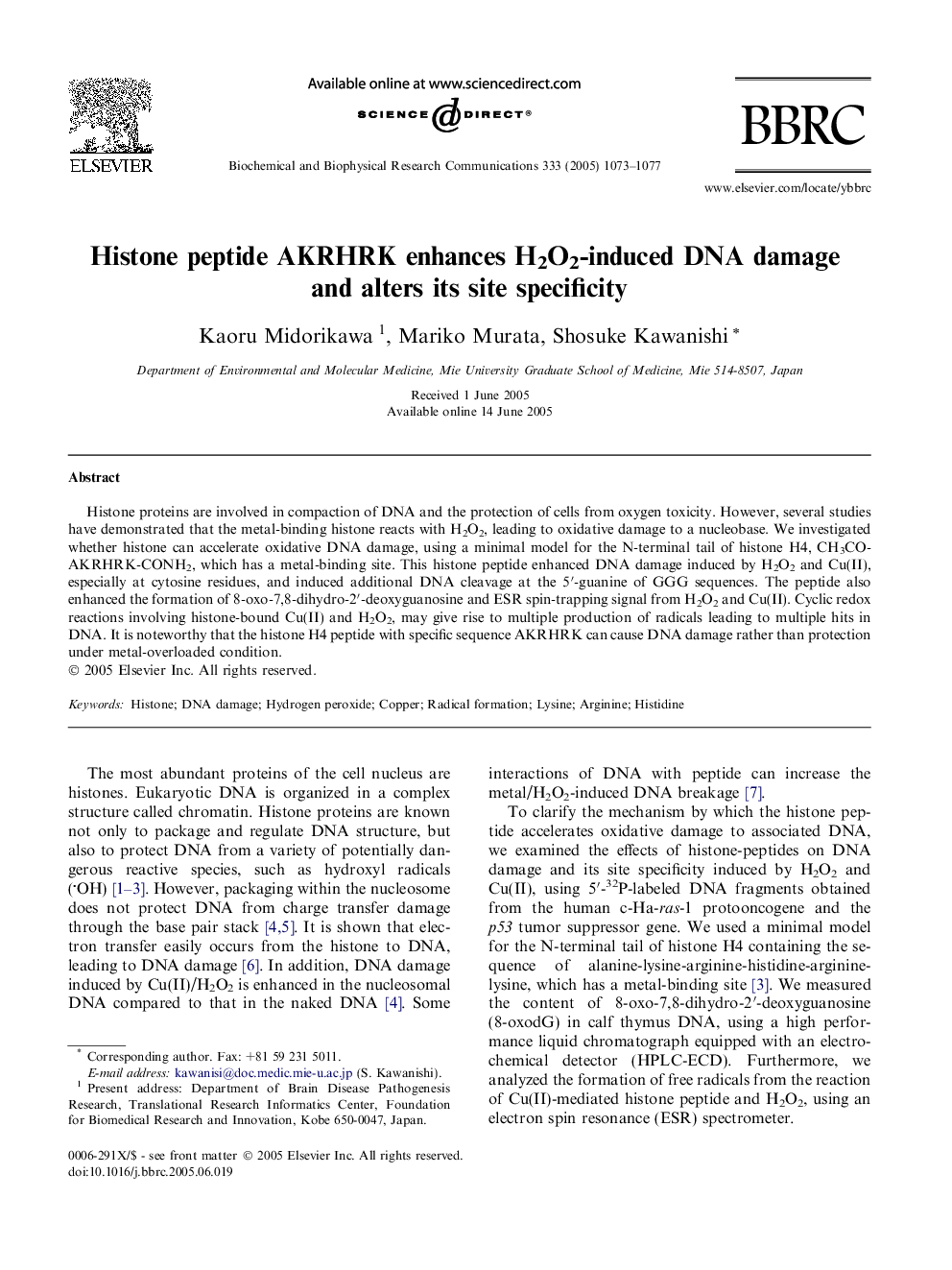| Article ID | Journal | Published Year | Pages | File Type |
|---|---|---|---|---|
| 10768545 | Biochemical and Biophysical Research Communications | 2005 | 5 Pages |
Abstract
Histone proteins are involved in compaction of DNA and the protection of cells from oxygen toxicity. However, several studies have demonstrated that the metal-binding histone reacts with H2O2, leading to oxidative damage to a nucleobase. We investigated whether histone can accelerate oxidative DNA damage, using a minimal model for the N-terminal tail of histone H4, CH3CO-AKRHRK-CONH2, which has a metal-binding site. This histone peptide enhanced DNA damage induced by H2O2 and Cu(II), especially at cytosine residues, and induced additional DNA cleavage at the 5â²-guanine of GGG sequences. The peptide also enhanced the formation of 8-oxo-7,8-dihydro-2â²-deoxyguanosine and ESR spin-trapping signal from H2O2 and Cu(II). Cyclic redox reactions involving histone-bound Cu(II) and H2O2, may give rise to multiple production of radicals leading to multiple hits in DNA. It is noteworthy that the histone H4 peptide with specific sequence AKRHRK can cause DNA damage rather than protection under metal-overloaded condition.
Related Topics
Life Sciences
Biochemistry, Genetics and Molecular Biology
Biochemistry
Authors
Kaoru Midorikawa, Mariko Murata, Shosuke Kawanishi,
